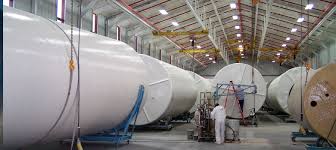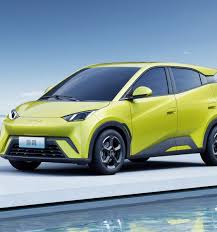Following a rare request from the United States for a coordinated move to cool global energy prices and ahead of a meeting of major oil-producing countries, governments from some of the world’s largest economies said on Thursday that they were looking into releasing oil from their strategic reserves.
According to the White House, the Biden administration has requested a wide range of countries, including China for the first time, to consider releasing oil stockpiles.
Informed sources on Wednesday said that other key buyers such as India, Japan, and South Korea were also involved in conversations.
As the global economy recovers from the pandemic, Washington is irritated that producers in OPEC+, the Organization of Petroleum Exporting Countries, and its allies, such as Russia, have refused to speed up more oil supply in response to U.S pleas.
With rising gas prices and other costs, Democratic U.S. President Joe Biden is under electoral pressure ahead of next year’s midterm congressional elections. In a poll conducted in October, 67 percent of individuals in the United States agreed that inflation is a major worry.
White House spokeswoman Jen Psaki said on Thursday that members of Biden’s national security team had discussed the need to satisfy fuel demand.
Psaki continued, “That is an ongoing conversation that we are having with a number of partners.”
On December 2, OPEC+ will meet. The organization has taken a more cautious approach to increase output, believing that the economic recovery is still too fragile to support increased output.
After reports about the US request and China’s decision to release some petroleum, oil prices fell roughly 4% to a six-week low, before recovering some ground on Thursday. Oil prices have fallen from recent highs in anticipation of increased global supply.
Physical spot price premiums for crudes sold to Asian clients from the Middle East and Russia fell as a result of the news, cooling Asia’s crude market.
China’s official reserve office told reporters that it was working on a crude oil reserve release, but declined to comment on the US request.
In September, China staged its first-ever public sale of oil reserves.
Beijing is anticipated to release another 10 million to 15 million barrels of petroleum from its reserves in eastern Zhoushan in its upcoming auction round, according to consultancy Energy Aspects.
According to Energy Aspects, “any oil released from the Chinese SPR must be replaced within 90 days.”
“Given how low crude stocks are, the market should focus on where these countries will find crude to replenish these tanks.”
With a strategic reserve of about 600 million barrels, the United States has the greatest. After the Arab Oil Embargo in the 1970s, the US SPR was established to ensure that the US had enough supplies to weather a disaster.
The shale revolution has propelled US output to compete with Saudi Arabia and Russia in recent years. As a result, the US has become less reliant on oil imports from other countries, notably OPEC members.
OPEC FACED WITH A CHALLENGE
The factors emphasize importers’ dissatisfaction with a cartel that has controlled oil pricing for more than five decades, such as the United States and India.
It would also be the first time that China, the world’s second-largest oil consumer, and importer, would participate in a joint release with the US.
OPEC+ members did not respond immediately with an official statement. The company has been progressively increasing output by 400,000 barrels per day (bpd) every month, reversing historic production cuts imposed in 2020 when the epidemic lowered gasoline demand.
OPEC Secretary-General Mohammad Barkindo indicated this week that the organization expects an oil supply surplus to emerge next month. Saudi Arabia’s exports increased to 6.52 million bpd in September, the highest level since January.
It would be unexpected, according to one OPEC source who did not want to be identified, if consuming countries released stocks to lower prices rather than to address a supply shortage.
Other countries, such as China and India, have been pressuring OPEC for some time.
“This is not a question of supply being unavailable,” India’s oil minister, Hardeep Singh Puri, said at a conference in Dubai on Wednesday. “There are 5 million barrels of supplies per day that are available but have not been released for whatever reason.”
OPEC+ has been increasing oil output by 400,000 barrels per day every month since July, but it still has 3.8 million barrels per day in supply cuts that it has not yet returned to the market. In reaction to the rapid spread of the coronavirus epidemic, OPEC+ curtailed output by more than 10 million barrels per day in April 2020.
IEA OUT, CHINA IN
The US and its allies have previously coordinated strategic petroleum reserve releases, such as in 2011 when supplies were disrupted by a conflict in OPEC member Libya. Coordination has been handled by the International Energy Agency, a Paris-based energy watchdog whose members include the US, Japan, and a number of European countries.
The US did not seek the European Union for its involvement, claiming that Europe’s main issue has been increasing natural gas prices.
According to the IEA’s website, such disclosures are not intended for price intervention. The US contacted both Japan and South Korea, who both stated that they do not release reserves solely to deal with rising prices.


















